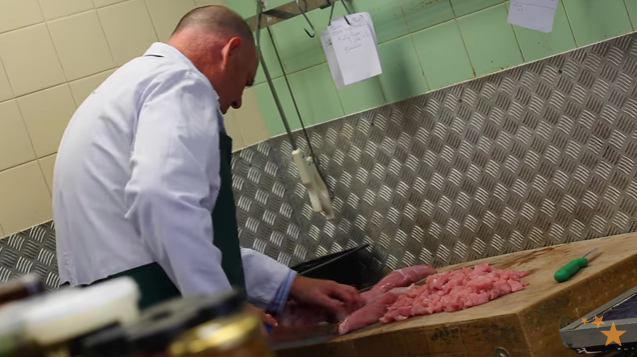Who are they?
Terry Murray senior and Terry Murray junior run the Village Butcher in Southfields, London. Butchering has been in the family for many years and Terry junior has worked in the shop since leaving school at the age of 16. Some experience of working in cafes, delis or other areas of food retail is vital if you want to become a butcher, say the Murrays, as you need to learn on the job.
video case study: How to be a butcher
A day in the life of a butcher
Terry senior says that being a butcher is hard work and involves getting up early, usually arriving at about 6:30am. Some days are designated for specific tasks – for example pigs are delivered from the local farm on Wednesdays so Thursdays are devoted to sausage making.
Learning how to cut meat can be a bit of a challenge; there are lots of opportunities for accidents with sharp knives and deli meat slicers involved.
There’s usually two busy periods: in the morning and then in the afternoon during the school runs. The Village Butcher serves two local schools and nurseries, which means lots of preparation as the meat must be cut up into small pieces.
The butchers is open seven days a week but each member of staff only works five days. All members of the same family, they juggle shifts as fairly as possible so everyone is happy.
Terry junior says there are highs and lows working with family, but that it’s generally a good laugh.
As a butcher you need to order, store and maintain stock, as well as serve customers, design product displays and cut, bone and trim meat. You will need to receive deliveries, inspect their contents and assess their hygiene levels.
You also need to put meat stock in cold storage areas at the end of the day. You may be required to drive to markets, wholesalers and customers’ premises too.
Advice for aspiring butchers
If you still fancy becoming a butcher and perhaps buying your own butcher’s shop, you might find Terry’s advice useful:
- Always be hygienic: customers want to buy meat from a butchers that is scrupulously clean and serves fresh, well-kept meat.
- Take the time to make your own sausages and burgers.
- Customers always come first, so it’s really important to enjoy interacting with customers.
- You will need to learn about animal anatomy and the science behind various cuts of meat.
- Keep up with trends. A recommendation from a TV chef can cause demand for a particular cut of meat to spike.
- Learn about cooking. Many modern butchers advise customers about how to best cook cuts of meat and where they source the meat from. This helps you build a strong customer base in an age where consumers are increasingly concerned about animal welfare and the quality of meat.
- The Village Butcher recently set up Facebook and Twitter accounts and now has its own website where customers can place orders and request online deliveries. It’s good practice to do something different not offered by other butchers in the area.
- The profession is currently male-dominated but good butchery is all about well-honed skills and precision. While you need a certain amount of physical strength to handle the meat, there is no reason why women can’t also be butchers.
- Location is important. Near a train station or a nice little high street is ideal.
- Always prioritise quality. Terry can trace every animal back to the farm. All members of staff are fully trained and know what they’re doing. Make the experience of buying and eating meat pleasant and enjoyable for your customers and you won’t go wrong!





